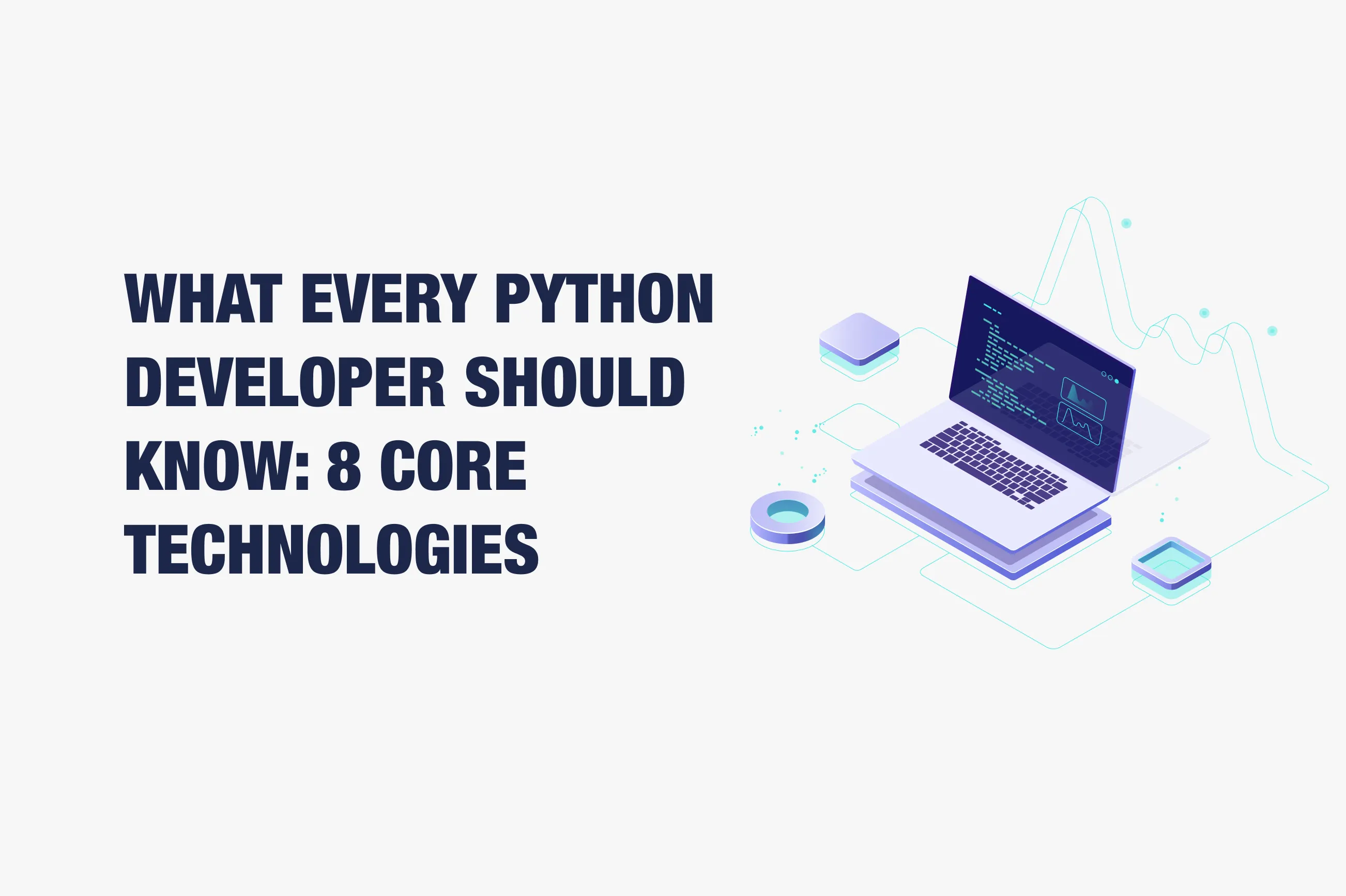Each developer has his own set of technologies and tools that he uses in his work. Their choice is carried out throughout the entire professional path.
So, the specialist finds something convenient, but something is not and forms his personal list of favorites. Owlab wants to help both novice Python developers and specialists, so we have prepared for you 8 necessary technologies that a developer cannot do without. In any field from engineering, AI development, chatbot development to backend. This list is based on the experience of our employees who work in this field.

#1 Algorithms
In order to solve problems faster and more efficiently, where big data appears, algorithms will come in handy. They will help you get results with less resources, and you will not have to think long and hard about each decision. To understand them, it is enough to read the book “Grokking Deep Learning”, or watch lectures on YouTube. Believe me, this is not so difficult, but it will come in handy for your entire career path. Books and lectures will help you with everything that is useful in your work, for example:
- Definition of algorithmic complexity;
- What is O notation in data structure;
- How to calculate complexity of an algorithm (very useful in the interview);
- Types of sorting algorithms and their features.
Most importantly, look for those options that will allow you not to engage in uninteresting cramming, but simply give you the necessary and useful information. A good developer is a cunning developer.
#2 SQL & Databases
Environments that store all the necessary data are perhaps the easiest to understand and the most important to work with. But to work with them, you need to navigate in many aspects:
- Features and rules for using a relational database;
- Understanding of all commands for creating and managing a table;
- The concept and rules for using NOSQL;
- Working with selections by columns under different conditions.
It is quite complicated for a beginner and sometimes requires quite extensive knowledge, but all this knowledge will obviously not be superfluous for a good Python developer.
#3 Git
Git is a distributed version control system that is indispensable when working on large projects and collaborating with other developers. This system allows you to track and record all changes made in the course of work, which eliminates the risk of losing some part of the code. Git is the leader among systems of its kind, but in order to succeed in using it, you should also learn:
- Types and rules for creating repositories;
- Different types of commands - from “add” to “merge” and “rebase”;
- The ability to make commits and work with them;
- Learn to work with branches.
#4 Docker
An excellent tool for automating the management and interaction with various applications is Docker. Docker is a platform for developing, delivering and running containerized applications. Docker allows you to create containers, automate their launch and deployment, and manages the life cycle. It allows you to run multiple containers on a single host machine.
With it, you can automate the creation of applications, their delivery and management. The platform allows you to quickly test and upload applications, run the required number of containers on one machine. You will have to learn the basic principles of work, otherwise you will not succeed, they include:
- What is image and container in Docker;
- Docker volumes knowledge;
- File writing rules.
#5 Data Structures
For optimal data storage in work, you will have to use data structures. And to work with them, you will need knowledge of the following aspects:
- Graphs and arrays;
- Hash tables;
- Set and linked lists;
- Stacks, queues and decks.
#6 Aggregate Functions
Learning all of the aggregate functions is optional, but it is important to understand count, average, groupby, and sum, as well as understand how they function and what they are used for. For example, they can be used to calculate the average value in one column. It is enough to take a function, reduce everything to one value and distribute the grouping for it.
Join will also come in handy. They will help create a comparison of two tables that are not related to each other by making subselects and collecting all the docking data. Understanding window functions is not required, but if you want to become a SQL guru, you can get confused with them too.
#7 Algorithms on Graphs
Graphs are an abstract representation of connections between different groups through points and lines. A point is a vertex of a graph, and a line is an edge connecting these two points. The number of edges determines the degree of the vertex.
And algorithms on graphs are the same graph that satisfies the operations of the algorithm. To navigate all these processes, you should study the breadth and depth search, as well as Dijkstra's algorithm. For example, when even the most basic file manager is created and certain files need to be found, this is a standard example of a breadth-first or depth-first search. The same principle applies when it is necessary to create or delete files according to one of the conditions in the created script. To speed up these processes and not to search manually, it is enough to study algorithms on graphs.
#8 Recursion
Recursion is an element that can be easily replaced by a cycle and, conversely, a cycle can also be easily replaced by recursion. At the same time, it is much more difficult to write it, as well as to maintain it. Although there are situations when it is the loop that is difficult to implement, then a function that calls itself will come to the rescue.
If you prevent the possible risk of a maximum depth error and do not pay attention to memory costs, then recursion can be used even in the work of algorithms.
Cooperation

Python development is in demand, because thanks to this language, almost all the most popular services were written! Although the language itself is not difficult to learn, it requires a lot of knowledge, because it is additional technologies that make it such an effective tool. If you are faced with the fact that you cannot solve some problem on your own, please contact us. Our team has vast experience and can cover your development needs. It doesn't matter what size your project is, we help both small startups and large companies. Below is a feedback form that you can fill out, it's free :)